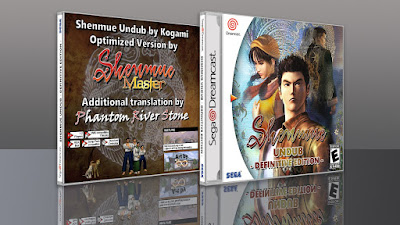Since the beginning of time - well, gaming - video games have come in boxes with artwork. The artwork was put there to sell the experience to you, to convince you why the game inside that box was the game you needed to leave the shop with that day more so than any of the others. By the time our beloved little white SEGA box came onto the market, it was the sixth generation of gaming. Even games released for the microcomputers of the '80s had box art, so, by the late '90s, it was very much an established norm.
On the Dreamcast, there was a clear template for each region of how the box artwork should look. In Europe, you had the nice blue base template and logos; a front cover, a spine, and the back cover. So simple and elegant, everything looking uniform on a shelf... what could possibly go wrong?
Well, quite a lot it turns out...
Tokyo Highway Challenge
Right from day one, Dreamcast game publishers found sticking to simple templates difficult. Tokyo Highway Challenge (known as Tokyo Xtreme Racer in the USA) is actually one of the Dreamcast’s more under-appreciated titles. Leaning heavily into an Initial D vibe, the game places you onto Tokyo’s C-1 “highway” and tasks you with challenging and beating all the other illegal street racers in a quest to become the ultimate import racer. Quite how you do that in what are domestic cars in Japan I never did figure out, but that’s not what we’re here to discuss! So, how exactly did Crave fail on the console's European launch day with their game packaging?
 |
| Clearly using the white arc of the US theme. |
Mistake: Using the US Dreamcast template on the front cover. Although it does at least look like they tried, seeing as they went to the effort of removing the little orange triangle that represents the console's power LED...
NFL Blitz 2000
Also on day one, it wasn’t just Crave who were struggling with the idea of box art. Step forward, Midway! In their defence (“DEFENSE!!!”), they did have more boxes to get right at launch with Hydro Thunder, Ready 2 Rumble and Mortal Kombat Gold all releasing alongside NFL Blitz 2000.
NFL Blitz 2000 is an arcade sportsball game. I hear it's good fun, but I won’t lie, I’ve never understood a sport called football where most of the game has the players holding the ball and running. Anyway, having graced us with multiple launch titles, I can confirm that Midway got the front and back of the game perfect. So far, so good. So what on earth could possibly go wrong from here?
 |
| Just the Dreamcast logo and the code on the spine. |
 |
| Putting the game on a shelf only emphasises the issue even more... |
Mistake: Forgot to put the game's name on the spine.











































